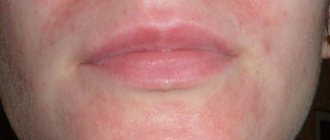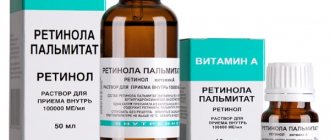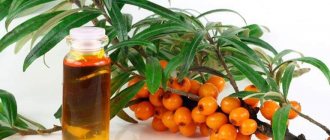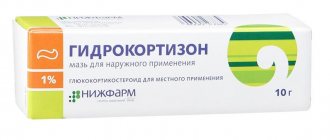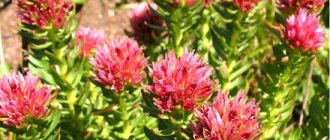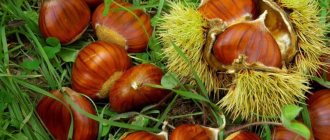Cedar essential oil is popular today due to its pleasant smell and ability to repel annoying insects. And thanks to its sweet, woody aroma, it has gained popularity as a vital ingredient in perfumes.
Cedar oil has many beneficial properties and benefits. It reduces hair loss, improves skin condition, relieves pain and much more. However, what's even more interesting is that cedarwood oil has been around a lot longer than you might think.
It's important to note that not all essential oils are the same, even if they share a common name. Cedar oil from China may have completely different properties than oil from America.
Pharmacological properties
The properties of Cedar oil are determined by its composition. The oil contains unsaturated fatty acids that dissolve cholesterol plaques and prevent the development of cancer cells. It includes:
- vitamin A, responsible for the growth and development of the body;
- vitamin B1, which improves the functions of the central nervous system, cardiovascular and digestive systems;
- vitamin B2, which normalizes the condition of the mucous membranes, skin and liver, and also has a positive effect on the organ of vision;
- vitamin E, which stimulates the endocrine system and protects cell membranes from damage;
- vitamin F, which promotes the breakdown of fats and the absorption of proteins;
- magnesium, which is responsible for the proper formation of bone structure;
- potassium, which strengthens the heart muscle;
- iron, which is part of hemoglobin;
- copper, which improves brain activity;
- manganese, which promotes the proper formation of cartilage and normalizes the synthesis of hormones;
- zinc, which normalizes the function of the prostate gland and ensures tissue regeneration.
Pharmacodynamics and pharmacokinetics
The pharmacodynamics and pharmacokinetics of Cedar oil due to its complex multicomponent composition have not yet been studied.
History, taste
The chronicles of the peoples of the Urals, Siberia, and Altai contain high assessments of cedar pine. Our ancestors knew and were able to use durable wood, bark, pine needles, and fruits, from which healthy oil was squeezed out using wooden presses.
In Tobol, the cedar pine was called the “cherished tree,” the Ural Cossacks called it the “Siberian giant,” and in Altai, the “nurse.”
The Siberian treasured tree was called cedar by Russian pioneers, Christians. They knew the Bible well, which often mentioned the sacred cedar. Evergreen trees with amazingly tasty fruits have helped us out on long hikes more than once.
Poor nutrition and lack of vitamins caused scurvy among the discoverers of new lands. The gums became soft and bled. The joints ached, the muscles lost their elasticity.
Cedar oil helped to overcome a serious illness; its use together with decoctions of pine needles relieved pain, restored strength, and filled the body with energy for further travels.
The travelers decided that the pine was the biblical cedar and told everyone about the miraculous “medicine” from its seeds.
The 19th century, with the rapid development of railway transport, made it possible to buy and export the oil elixir from the taiga.
The First World War led to shortages of all food products. The Moscow Food Committee issued a resolution on the need to establish the production of pine nut oil (1917). The Bolsheviks created a trust for the procurement of cedar products (1921), then the cedar industry (1931 - 1933).
They built two oil factories. We determined a procurement plan for the local population. Irregular harvests, a bloated administrative apparatus, and low procurement prices thwarted grandiose plans.
To date, the situation has not changed. What the harvest will be like and the level of extraction are complex questions that have no answer.
The taste of Siberian cedar oil has a special feature - a guarantee of quality. The first moments he is invisible. Then a fresh, resinous, tart aftertaste appears.
Indications for use
Oil and capsules inside:
- Gastritis with high acidity;
- Cholecystitis and hepatocholecystitis;
- Chronic pancreatitis;
- Erosive and ulcerative lesions of the stomach and duodenum;
- Postoperative disorders in the stomach caused by the inflammatory process;
- Nervous disorders;
- Tuberculosis and other pulmonary diseases;
- Diseases of the blood and lymph;
- High blood pressure;
- Atherosclerosis.
Cedar oil is also used as a remedy that has a general strengthening effect and increases the protective properties of the body.
Externally lubricating oil:
- Dry skin;
- Irritation;
- Acne;
- Diathesis;
- Eczema;
- Burns;
- Dermatoses;
- Dandruff;
- Hair loss;
- Varicose veins (lubrication + massage).
The oil is also used to cleanse the skin.
How to obtain the product
Between the Urals and the Far East stretches an immense taiga - the largest forest on the planet, it is several times larger than the Amazon jungle. This is a zone of evergreen trees, the kingdom of prickly needles and pine nuts.
A little about pine
Siberian cedar pine or Siberian cedar has nothing in common with true cedar, two species of which grow in the Mediterranean and one in the Himalayas. Russian cedar belongs to the genus Pine, and “overseas” cedar belongs to the genus Cedar and their seeds are absolutely not edible.
Siberian cedar lives for several centuries, which is why it is a symbol of longevity among many nationalities. It begins to bear fruit at the age of 60 years and later. The cones ripen and begin to fall in September. Each can contain from several dozen to one hundred and fifty seeds - tiny pine nuts. One tree can “give birth” to twelve kilograms of nuts.
From a scientific point of view, the gymnosperm fruits of the Siberian pine cannot be called nuts - this is a popular name due to the dense peel, which contains a slightly sweetish pulp.
At the beginning of autumn, the harvesting of cedar cones begins. Our ancestors believed that good butter would only come from ripened and already fallen pine cones. If the fruit is forcibly torn from a cedar, then some of the beneficial properties are lost.
In the old days, it was believed that the best oil was obtained from the nuts contained in the cones collected by children. Their thoughts are pure and innocent, and pine nuts are able to read and absorb the energy of the environment.
The cones are dried and then nuts are knocked out of them. At the second stage, they are sorted by sifting and immersing in water, when empty or spoiled seeds are removed from the total mass. After the “water procedures,” the nuts are dried naturally in the sun or in a special drum dryer. Depending on humidity and weather conditions, drying lasts from five days to three weeks, after which the nuts are removed from the shell.
Photo: https://pixabay.com/photos/cedar-cedar-branch-branch-needle-526662/
Methods of obtaining
Pine nut oil is obtained from prepared and peeled kernels in three ways.
- Cold pressed. The kernels are placed under a press and the fatty substance is squeezed out under pressure. This oil is considered the most useful, but not very much of it is obtained.
- Thermal extraction. The nuts are ground, heated and washed with hot water. As a result of these manipulations, the oil is separated, floats to the surface and is collected, then to evaporate excess moisture and filter it. This method makes it possible to obtain a high-quality culinary product, but due to the fact that the nuts were subjected to heat treatment, most of the beneficial substances are destroyed.
- Chemical extraction. Manufacturers prefer to remain silent about this method. The ground kernels are filled with special chemicals that absorb the fatty component. Then, through separation or a reverse chemical reaction, the cedar oil is separated and poured into containers. Needless to say, the benefits of this “product” are negligible, and often even harmful to the body. Unfortunately, this method is used quite often, and Chinese manufacturers are especially guilty of it.
How to determine the quality of cedar oil? You will learn about this a little later.
Instructions for use of Cedar oil: method and dosage
- Aroma lamp: fill the lamp bowl with water, add 5-8 drops of oil, stir, then light a fire under the bowl. Add water from time to time as needed;
- Sprayer (it is better if it is made of ceramic, porcelain or glass): fill the container with distilled or still mineral water, add a little alcohol and 3-5 drops of oil, close and shake;
- Baths and saunas: dilute 5-10 drops of oil in 1-2 tbsp. liquid honey, whole milk, cream, neutral soap or vegetable oil, pour into the bath and stir. To create aromatic steam in a bath/sauna, you need to add 5 drops of oil to a ladle of water;
- Massage: add 15-20 drops of cedar oil to 50 mg of base (almond, avocado or jojoba oil) and shake well.
Also, the properties of Cedar oil allow it to be added to cosmetics:
- Shampoos (neutral): 10-15 drops of oil per 100 ml;
- Creams (neutral): 15-20 drops of oil per 50 ml.
For dermatological diseases, oil from the fruits of the cedar tree is used to lubricate the affected areas.
Take 1 tsp of cedar oil orally. or 10 capsules 3 times a day for 1-2 months. You can conduct 3-4 courses per year.
As a dietary supplement, the oil can be taken continuously in a dose of 15-20 g.
Receipt methods
The process of obtaining an oil product from pine nuts is expensive and labor-intensive.
First, ripe cones are collected from the tree. The nucleoli are shaken out of them using a special machine. As a rule, this is done right where the pine trees grow.
The next step is to peel the nuts from their shells. In addition to the hard shell, a thin film called amniotic membrane is also peeled off.
The kernels are then washed and dried for several hours. After this, they are sorted by size using a fractionator.
The largest and highest quality nuts are sold in their pure form. Some of them go to cold-pressed oil. Smaller nucleoli are suitable for hot pressing.
For the first method, the nucleoli are squeezed out with a large press. The resulting oil undergoes mechanical filtration to remove cake and husk residues, after which it is ready for sale. This product is a concentrate of nutrients and vitamins.
During hot pressing, most of the valuable components are lost, but the oil yield is greater. To do this, the nuts are mixed with water and the pomace is extracted under high temperatures. This product is much cheaper.
It is quite possible to prepare cedar oil at home. Using a home oil press makes this even easier. If there is no special unit, you can use a regular wooden masher. With its use, you need to grind the nuts for a long time and thoroughly until they begin to release liquid. But the manual method requires a very large amount of raw materials.
Cedar oil has a healing, moisturizing, restoring effect on skin and hair.
Reviews about Cedar oil
Today you can find numerous positive reviews about Cedar oil. Patients note that long-term use of this dietary supplement lowers cholesterol levels, improves metabolism, improves immunity and helps cleanse blood vessels. Some people take 1 tablespoon of it with meals or add it as a seasoning to vegetable salads. Opinions also note the pleasant aroma of the oil and its relatively low cost. Buyers usually like the natural composition of Cedar oil and its effectiveness for the prevention of influenza and ARVI, which is often mentioned in reviews.
Contraindications
Cedar oil, despite all its beneficial properties, also has contraindications. True, there are significantly fewer of them than other similar products.
- Oil obtained by cold pressing should not be consumed by people with kidney stones or gallstones.
- Oil of any type is high-fat, and this leads to standard restrictions on the amount of use in order to avoid exacerbation of the existing disease.
- Intolerance to this product
Also, people who have allergic reactions to any nuts should use this dietary supplement with caution.
If for some reason you cannot use cedar oil, pay attention, for example, to walnut oil.
Expert's comments
Modern medicine considers cedar oil to be an accumulator of biologically active substances that are ideally selected and balanced by nature itself. Test results in a number of institutes of the Russian Academy of Medical Sciences, clinics, and research medical centers indicate the high therapeutic effectiveness of cedar oil, since it contains 19 amino acids necessary for protein synthesis. Linoleic and linolenic acids are not synthesized by the human body, however, their role is irreplaceable. Cedar oil is also a concentrate of vitamin F, a growth vitamin, the absorption of which depends on the presence of a vitamin complex in the product.


